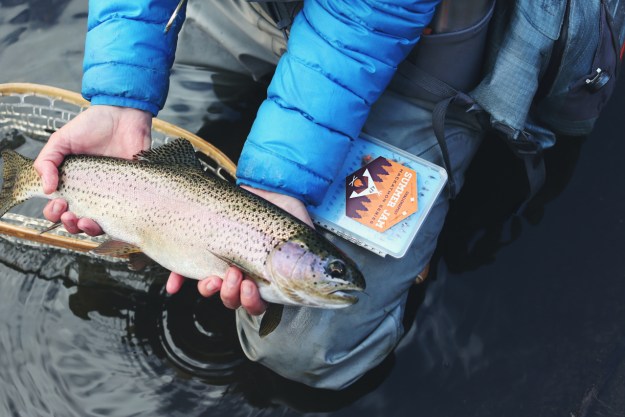For a lot of day hikers, a few Clif Bars, a Snickers, and some beef jerky are considered a proper “trail lunch.” However, if you’re gearing up for an extended backcountry trek or the best hikes in the U.S., it pays to pack more carefully. Snacks and sugary treats might be your go-to for a day hike — a bag of trail mix can be enough to motivate most people to hit the trail — but too much of a good thing and you find yourself needing some proper food.
Hiker hunger can start off slowly. It creeps into your conversations, it turns your cheerful stroll into a plod, and soon you decide that bird song you loved waking up to now sounds shrill in your ears. There’s a fine line between hunger and hanger — or being hangry, and there’s a good chance your friends will realize where you are on the scale before you do. Hiking uses a whole load of calories, and you need to keep your body properly fueled up. Here are our top tips to avoid hiker hunger on the trail.

Don’t Skip Breakfast
Intermittent fasting is increasing in popularity, and if you regularly skip breakfast, that’s fine. When it comes to hiking days, though, you need to start your day right with a breakfast that balances carbohydrates and fats. A blend of simple and complex carbs provides a shot of readily accessible fuel so you’ll be ready to go. Fats are doubly good for slowing digestion and helping to keep you full. A mix of granola, oatmeal, and nut butter is an ideal way to start the day.
Stay Hydrated
OK, so staying hydrated is important, but what’s that got to do with food? Well, hydration goes beyond just drinking water. In fact, if you drink too much water and don’t eat, you’re likely to flush electrolytes and salts out of your body. If you find yourself lacking in these important minerals, you can experience cramping, headaches, and far higher levels of fatigue than you should be feeling. Sure, you can replenish these with specially designed tablets that you dissolve in water, but you can also get all you need from eating the right food on the trail.

Eat Less, More Often
It’s not rocket science that eating more often will fend off hunger. The key, however, is eating the right nutrient-dense foods — in particular, those high in fats — at regular intervals throughout the day. Some thru-hikers suggest snacking every 60-90 minutes. It’s not as daunting as it sounds, and it rarely requires breaking your stride.
While most dietitians advise consuming one-quarter to one-third of all calories through fats, hikers have very different needs. Maintaining a diet of at least 40% fat can prove critical to staying full and energized on the trail. Keep fat-heavy snacks like nuts and chocolate bars in your pockets so they’re accessible whenever you need them. Peanut butter is a hiker’s best friend, and anyone who’s hiked the PCT or the Appalachian Trail proudly spreads it on everything.
Beware the Sugar-Crash Cycle
Relying mainly on sugar to provide energy boosts throughout the day is a surefire way to a cycle of constant crashes. The key is tempering sugar intake with other types of nutrients. Dried fruit and energy blocks guarantee an almost instant sugar rush, but be sure to supplement them with things like nuts to slow the energy release.

Maximize Your Overnight Recovery
Not eating right on the trail for days can lead to uncontrollable hunger at night. This is when most hikers are tempted to binge on highly processed and junk foods to satisfy the previous eight hours of cravings. The hours just before bed are key to your body’s overnight recovery. Protein helps repair torn muscles. Most studies recommend that high-intensity athletes consume around 1.6 grams of protein per 2 pounds of body weight. The anti-inflammatory properties of fiber also fend off sore, stiff joints and muscles in the morning. Consider foods like meats, fish (even packaged tuna), chickpeas, and lentils at dinnertime.
Eat Fresh in Town
Most long-distance hikers spend days or weeks away from civilization. That means packing foods that can literally go the distance. But most highly processed foods lack vital micronutrients that can only be found in fresh food. Whenever possible — on days spent off the trail and in town — stock up on plenty of fruits and salad. Of course, it’s probably not the food you want, but it is what your body needs. They’ll help your body load up on fat-soluble vitamins for the days when you’re back on the trail. Also, be sure to pack a complete daily multivitamin, which can help fill the nutritional gaps when you are miles from the nearest market.
Editors' Recommendations
- Beginner’s Guide to Trail Running and What You Need
- The Best Hydration Packs for Hiking, Trail Running, and Day Trips
- How to Calculate Hiking Time and Plan For Being Away



